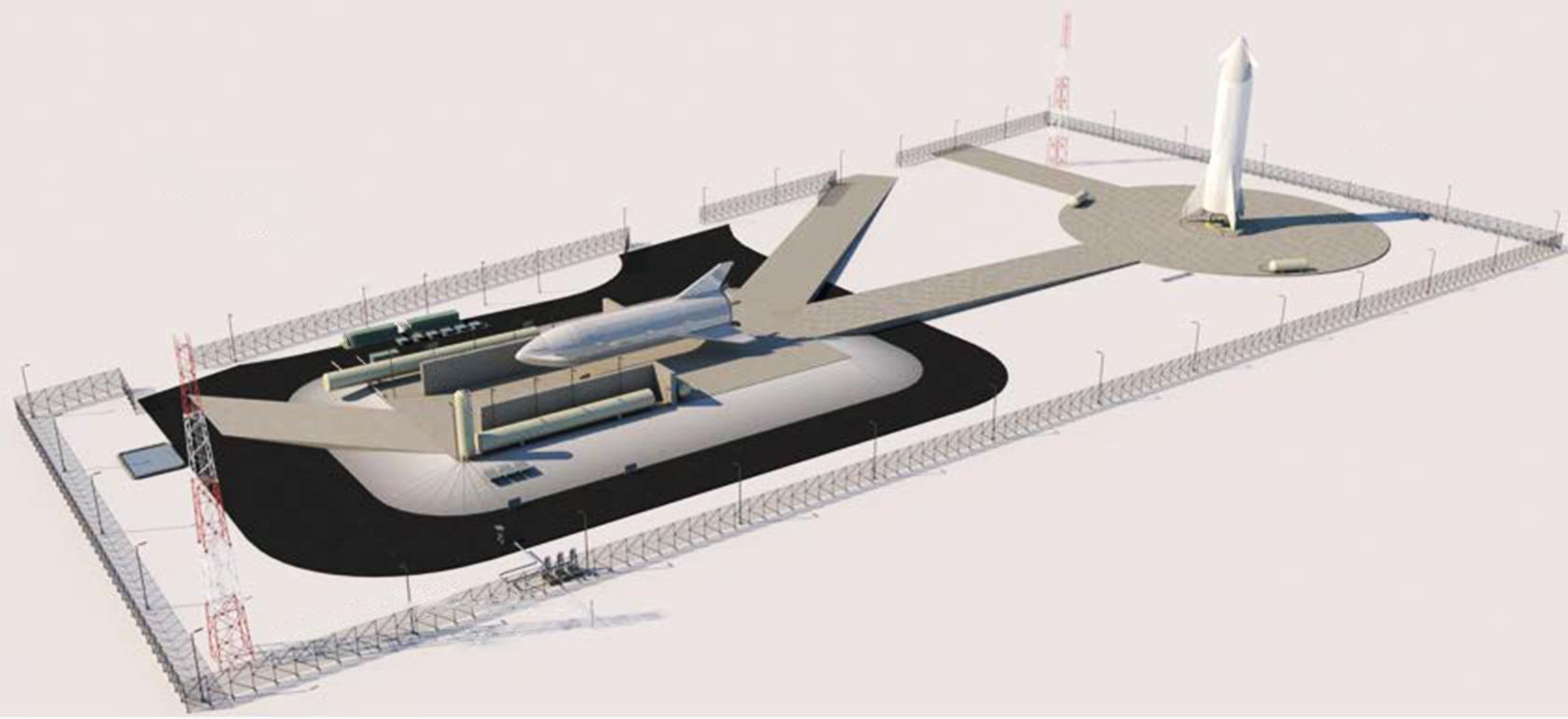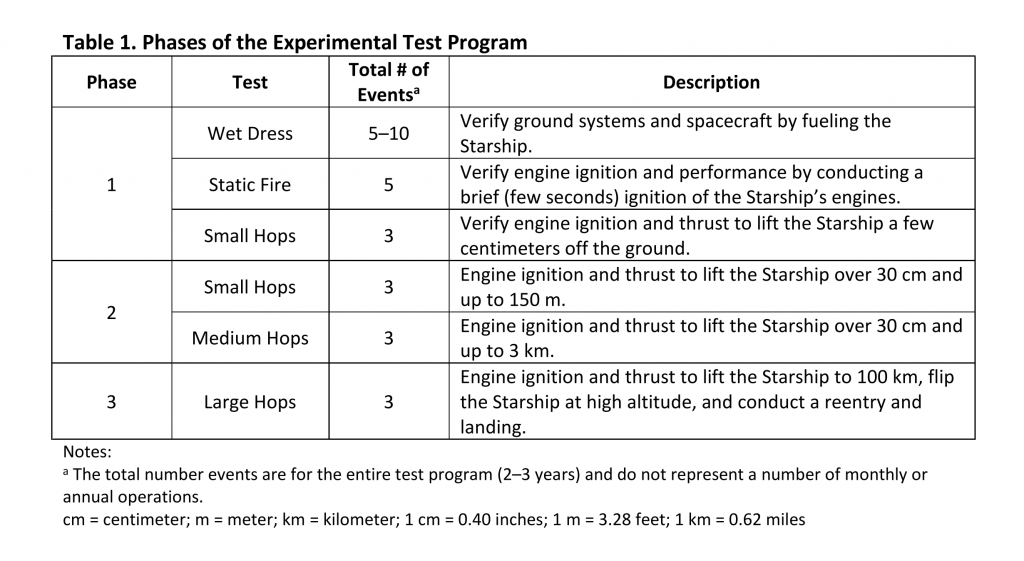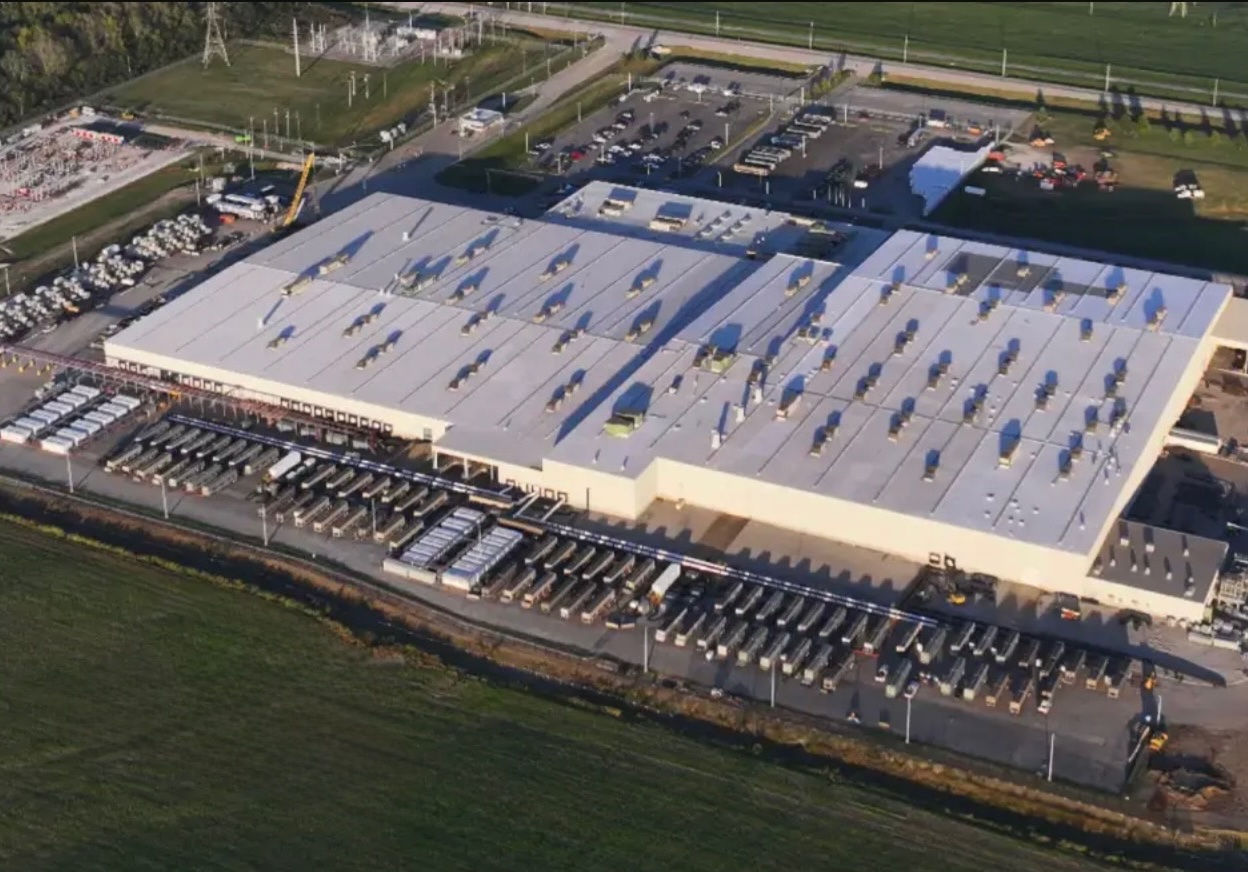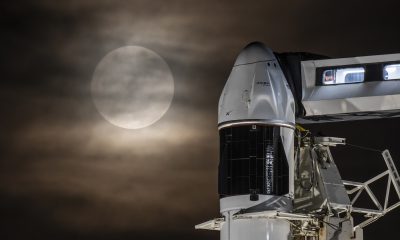

News
SpaceX files Starship flight debut paperwork, preps for launch pad upgrades
On September 9th, the first signs of SpaceX planning for Starship Mk1’s South Texas launch debut appeared in the form of FCC applications, requesting permission to communicate with the rocket prototype during its first flight.
Simultaneously, word broke on September 5th – via a Business Insider report – that SpaceX is effectively set to receive FAA permission to upgrade its South Texas launch facilities for Starship. All things considered, it appears that most – if not all – the stars have begun to align for SpaceX’s inaugural Starship launch, said by CEO Elon Musk to be scheduled for no earlier than October 2019.
The application confirms several details about Starship Mk1’s debut, revealing that SpaceX will kick off the test campaign with a running jump from Starhopper’s 150m (500 ft) flight-test hand-off. The company is targeting an altitude of ~20 km (12.5 mi) – more than two magnitudes higher than its predecessor’s peak – and plans to land the spacecraft just a hundred or so feet from its launch site, on the same landing pad used by Starhopper.
SpaceX teams continue to work around the clock to ready Starship Mk1 for its ambitious flight debut. A new ring segment was stacked on top of the vehicle’s tank section several days ago, while locals also spotted the delivery of one or two new legs/fins, built out of riveted steel. SpaceX’s Boca Chica team continues to struggle to attach Starship’s tip to the rest of its curved nose section, having recently separated the segments for the first time in months.
Preliminary welding of Starship Mk1’s upper (and final) tank dome appears to be complete and technicians are working to integrate the spacecraft’s internal hardware before it can be installed. Meanwhile, a range of new concrete pads have been set and are being outfitted with additional production hardware, likely paving the way for simultaneously Starship-Starship or Starship-Super Heavy builds in the near future.
Documents acquired and published on September 5th by Business Insider reporter Dave Mosher touched on the assembly facility’s expansion and provided an excellent overview of SpaceX’s planned upgrades to its Starship launch pad. Retasked from original plans (and approvals) for an additional Falcon 9/Falcon Heavy launch site, the documents confirmed that the FAA has reevaluated its 2014 Environmental Impact Statement (EIS) and is effectively ready to re-permit SpaceX’s Boca Chica facilities in light of its new purpose.
About as classically SpaceX as it gets, the company has already dramatically altered plans and timelines since the FAA even began to reevaluate its launch pad EIS. Discussed as Phases 1-3, SpaceX – barely two months after the FAA’s updated EIS statement – appears to have already completed Phases 1 and 2 (wet dress rehearsals, static fires, and small hops) and doesn’t have public plans for “medium hops” of “30 cm…up to 3 km”. The FAA statement – signed in May 2019 – says that the agency did not have the information necessary to permit Phase 3, involving “engine ignition and thrust to lift the Starship to 100 km, flip the Starship at high altitude, and conduct a reentry and landing.“

This article’s feature photo shows SpaceX’s late-2018/early-2019 imagining of launch site upgrades reportedly needed to support Phase 2 testing. Although extremely similar to what SpaceX has already built in South Texas, some significant changes are definitely present, and it looks like SpaceX has a busy 4-8 weeks of work ahead to complete necessary modifications, including expanded propellant storage, two large walls, and possible underground routing of critical infrastructure.
Ultimately, significant work remains for SpaceX to receive both FAA’s EIS go-ahead and experimental launch permits for Starship Mk1’s first flight. Based on the ~3 weeks it took the FAA to simply extend Starhopper’s existing 25m hop permit to 200m (eventually cut to 150m), it could be quite the uphill battle to jump to a 20 km flight test. For the time being, SpaceX hopes to conduct Starship’s 20-km flight debut as early as October 13th, in line with Musk’s ambitious “October” target.
Check out Teslarati’s Marketplace! We offer Tesla accessories, including for the Tesla Cybertruck and Tesla Model 3.
Elon Musk
Why Tesla’s Q3 could be one of its biggest quarters in history
Tesla could stand to benefit from the removal of the $7,500 EV tax credit at the end of Q3.

Tesla has gotten off to a slow start in 2025, as the first half of the year has not been one to remember from a delivery perspective.
However, Q3 could end up being one of the best the company has had in history, with the United States potentially being a major contributor to what might reverse a slow start to the year.
Earlier today, the United States’ House of Representatives officially passed President Trump’s “Big Beautiful Bill,” after it made its way through the Senate earlier this week. The bill will head to President Trump, as he looks to sign it before his July 4 deadline.
The Bill will effectively bring closure to the $7,500 EV tax credit, which will end on September 30, 2025. This means, over the next three months in the United States, those who are looking to buy an EV will have their last chance to take advantage of the credit. EVs will then be, for most people, $7,500 more expensive, in essence.
The tax credit is available to any single filer who makes under $150,000 per year, $225,000 a year to a head of household, and $300,000 to couples filing jointly.
Ending the tax credit was expected with the Trump administration, as his policies have leaned significantly toward reliance on fossil fuels, ending what he calls an “EV mandate.” He has used this phrase several times in disagreements with Tesla CEO Elon Musk.
Nevertheless, those who have been on the fence about buying a Tesla, or any EV, for that matter, will have some decisions to make in the next three months. While all companies will stand to benefit from this time crunch, Tesla could be the true winner because of its sheer volume.
If things are done correctly, meaning if Tesla can also offer incentives like 0% APR, special pricing on leasing or financing, or other advantages (like free Red, White, and Blue for a short period of time in celebration of Independence Day), it could see some real volume in sales this quarter.
You can now buy a Tesla in Red, White, and Blue for free until July 14 https://t.co/iAwhaRFOH0
— TESLARATI (@Teslarati) July 3, 2025
Tesla is just a shade under 721,000 deliveries for the year, so it’s on pace for roughly 1.4 million for 2025. This would be a decrease from the 1.8 million cars it delivered in each of the last two years. Traditionally, the second half of the year has produced Tesla’s strongest quarters. Its top three quarters in terms of deliveries are Q4 2024 with 495,570 vehicles, Q4 2023 with 484,507 vehicles, and Q3 2024 with 462,890 vehicles.
Elon Musk
Tesla Full Self-Driving testing continues European expansion: here’s where
Tesla has launched Full Self-Driving testing in a fifth European country ahead of its launch.

Tesla Full Self-Driving is being tested in several countries across Europe as the company prepares to launch its driver assistance suite on the continent.
The company is still working through the regulatory hurdles with the European Union. They are plentiful and difficult to navigate, but Tesla is still making progress as its testing of FSD continues to expand.
Today, it officially began testing in a new country, as more regions open their doors to Tesla. Many owners and potential customers in Europe are awaiting its launch.
On Thursday, Tesla officially confirmed that Full Self-Driving testing is underway in Spain, as the company shared an extensive video of a trip through the streets of Madrid:
Como pez en el agua …
FSD Supervised testing in Madrid, Spain
Pending regulatory approval pic.twitter.com/txTgoWseuA
— Tesla Europe & Middle East (@teslaeurope) July 3, 2025
The launch of Full Self-Driving testing in Spain marks the fifth country in which Tesla has started assessing the suite’s performance in the European market.
Across the past several months, Tesla has been expanding the scope of countries where Full Self-Driving is being tested. It has already made it to Italy, France, the Netherlands, and Germany previously.
Tesla has already filed applications to have Full Self-Driving (Supervised) launched across the European Union, but CEO Elon Musk has indicated that this particular step has been the delay in the official launch of the suite thus far.
In mid-June, Musk revealed the frustrations Tesla has felt during its efforts to launch its Full Self-Driving (Supervised) suite in Europe, stating that the holdup can be attributed to authorities in various countries, as well as the EU as a whole:
Tesla Full Self-Driving’s European launch frustrations revealed by Elon Musk
“Waiting for Dutch authorities and then the EU to approve. Very frustrating and hurts the safety of people in Europe, as driving with advanced Autopilot on results in four times fewer injuries! Please ask your governing authorities to accelerate making Tesla safer in Europe.”
Waiting for Dutch authorities and then the EU to approve.
Very frustrating and hurts the safety of people in Europe, as driving with advanced Autopilot on results in four times fewer injuries!
Please ask your governing authorities to accelerate making Tesla safer in Europe. https://t.co/QIYCXhhaQp
— Elon Musk (@elonmusk) June 11, 2025
Tesla said last year that it planned to launch Full Self-Driving in Europe in 2025.
Elon Musk
xAI’s Memphis data center receives air permit despite community criticism
xAI welcomed the development in a post on its official xAI Memphis account on X.

Elon Musk’s artificial intelligence startup xAI has secured an air permit from Memphis health officials for its data center project, despite critics’ opposition and pending legal action. The Shelby County Health Department approved the permit this week, allowing xAI to operate 15 mobile gas turbines at its facility.
Air permit granted
The air permit comes after months of protests from Memphis residents and environmental justice advocates, who alleged that xAI violated the Clean Air Act by operating gas turbines without prior approval, as per a report from WIRED.
The Southern Environmental Law Center (SELC) and the NAACP has claimed that xAI installed dozens of gas turbines at its new data campus without acquiring the mandatory Prevention of Significant Deterioration (PSD) permit required for large-scale emission sources.
Local officials previously stated the turbines were considered “temporary” and thus not subject to stricter permitting. xAI applied for an air permit in January 2025, and in June, Memphis Mayor Paul Young acknowledged that the company was operating 21 turbines. SELC, however, has claimed that aerial footage shows the number may be as high as 35.
Critics are not giving up
Civil rights groups have stated that they intend to move forward with legal action. “xAI’s decision to install and operate dozens of polluting gas turbines without any permits or public oversight is a clear violation of the Clean Air Act,” said Patrick Anderson, senior attorney at SELC.
“Over the last year, these turbines have pumped out pollution that threatens the health of Memphis families. This notice paves the way for a lawsuit that can hold xAI accountable for its unlawful refusal to get permits for its gas turbines,” he added.
Sharon Wilson, a certified optical gas imaging thermographer, also described the emissions cloud in Memphis as notable. “I expected to see the typical power plant type of pollution that I see. What I saw was way worse than what I expected,” she said.
-

 Elon Musk3 days ago
Elon Musk3 days agoTesla investors will be shocked by Jim Cramer’s latest assessment
-

 News1 week ago
News1 week agoTesla Robotaxi’s biggest challenge seems to be this one thing
-

 News2 weeks ago
News2 weeks agoTexas lawmakers urge Tesla to delay Austin robotaxi launch to September
-

 Elon Musk2 weeks ago
Elon Musk2 weeks agoFirst Look at Tesla’s Robotaxi App: features, design, and more
-

 Elon Musk2 weeks ago
Elon Musk2 weeks agoxAI’s Grok 3 partners with Oracle Cloud for corporate AI innovation
-

 News2 weeks ago
News2 weeks agoSpaceX and Elon Musk share insights on Starship Ship 36’s RUD
-

 News2 weeks ago
News2 weeks agoWatch Tesla’s first driverless public Robotaxi rides in Texas
-

 News2 weeks ago
News2 weeks agoTesla has started rolling out initial round of Robotaxi invites


















